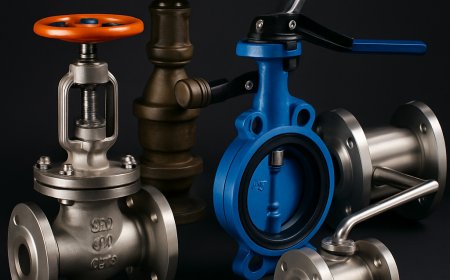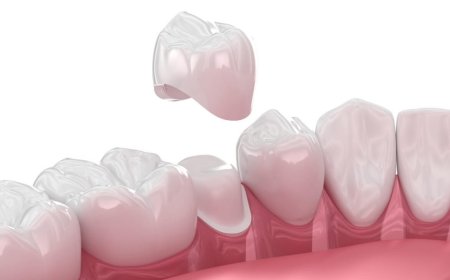Don’t Panic! Here’s What to Expect During a Tooth Extraction

Facing a tooth extraction can stir up anxietywhether it's a painful molar, an impacted wisdom tooth, or part of orthodontic prep. But there's no need to worry. Modern dentistry offers a smooth, safe experience when you need to get a problem tooth removed. Heres a detailed walkthrough of what to expect before, during, and after the procedure.
1. Why Tooth Extractions Happen
When saving the tooth isn't possible.
If a tooth is badly decayed, fractured, or infected beyond repair, extraction becomes necessary to protect your overall health and prevent spreading infections.
Overcrowding issues.
Before braces or clear aligners, pulling one or more teeth may help create space and achieve better alignment .
Wisdom tooth complications.
Wisdom teeth often emerge between ages 1725. They can become impacted, misaligned, or difficult to cleanleading to pain or infectiontriggering emergency removal .
2. Pre?Extraction: Consultation & Planning
Comprehensive evaluation.
Your dentist begins with a full exam and digital x?rays to assess tooth position, root structure, and proximity to vital structures like sinuses or nerves.
Tech-enhanced comfort.
Many clinicsincluding Afflux Dentistryemploy advanced digital imaging and sedation options (like nitrous oxide) to help minimize discomfort and improve precision.
Anxiety management.
Dentists often provide sedation dentistry or numbing methods to keep you relaxed during the procedure .
3. Types of Extractions
Simple Extraction.
Ideal for teeth that are visible above the gumline. Under local anesthesia, the dentist loosens the tooth with elevators, then removes it with forceps. Routine and generally quick.
Surgical Extraction.
Needed when teeth are partially or fully impacted beneath the gum or bone, particularly wisdom teeth. This may involve making a small incision gums and sometimes gently removing bone. Sedation is often provided .
Wisdom Tooth Removal.
A specialized surgical extraction targeting third molars, which may be under gums or near delicate anatomical structures. Its done carefully to minimize complications .
4. What Happens During the Procedure
-
Anesthesia & sedation:
Local anesthetic numbs the area; sedation (laughing gas, oral, or IV) may be used, depending on complexity.
-
Surgical access:
Your dentist clears gum or bone tissue as needed for surgical extractions.
-
Tooth removal:
The tooth is gently loosened and removedpieces may be taken out separately to protect surrounding structures.
-
Cleaning & closure:
The socket is cleaned, rinsed, and may be stitched if the procedure was surgical.
-
Protective dressing:
A gauze pad is placed over the extraction site to control bleeding and help the blood clot. Bite pressure is maintained for 2030 minutes .
5. Immediate Aftercare & Healing
-
Blood clot formation is crucial. It protects the bone and promotes healing. Rollingly or sipping through a straw can dislodge itleading to a painful condition called dry socket.
-
Gauze application: Keep applying gentle pressure with gauze until bleeding stops, usually within 30 minutes .
6. Managing Pain & Swelling
-
Swelling and soreness are common. Use cold packs for the first 24 hours, then warm compresses if needed.
-
Pain medication: NSAIDs like ibuprofen (possibly with acetaminophen) provide effective relief with fewer side effects than opioids .
-
Avoid certain habits: Dont smoke, sip through straws, or rinse vigorously, as they can lead to dry sockets or bleeding.
7. Dietary Tips Post-Extraction
-
Stick to soft foods like yogurt, mashed potatoes, soups, and smoothies.
-
Avoid hot, spicy, or crunchy foods that can irritate the site.
-
Stay hydrated, but sip water directlyno straws!
8. Recognizing Complications
Stay vigilant for these signs and contact your dentist if:
-
Severe pain that worsens after 24 daysoften indicates dry socket.
-
Heavy or persistent bleeding
-
Signs of infection: swelling, fever, pus, or foul taste.
-
Numbness or tingling: could indicate nerve irritation during wisdom tooth removal.
9. Long-Term Healing Process
-
Re?epithelialization: The socket closes with gum tissue within about 10 days.
-
Bone regeneration: New bone starts to form after 10 days; full bone fill occurs over 1012 weeks. Eventually, remodeling continues, adapting your jaw after tooth loss .
-
Follow-up visits: Your dentist may check healing and consider replacing the tooth (e.g., implants or bridges) if needed.
10. Why Dont Panic
-
Its very common.
Tooth extractions are routineyou wont be the only one going through it.
-
Advanced techniques help.
Digital imaging, sedation, gentle instruments, and laser tools make the process quicker and more comfortable than before.
-
Experienced teams care for you.
A quality dental clinic offers tailored care plans, clear explanations, and steady support during recovery.
-
Fast relief from symptoms.
Unlike root canals or medications, removing a problem tooth can immediately eliminate pain and infection.
11. Why Expert Care Matters
-
Local expertise counts, especially for surgical or wisdom tooth cases. Dentists with a strong track record and emergency availability offer both safety and peace of mind .
-
Clinics like Afflux Dentistrywith modern tools, sedation options, and caring staffensure the procedure is as patient-friendly as possible
12. Final Takeaways
-
Tooth extractions are safe and routine.
-
Planning: starts with evaluation, x?rays, and choosing the right sedation.
-
During: you wont feel pain thanks to anesthetic and skilled care.
-
After: expect mild discomfort, healing over days to weeks, and advice to protect your site.
-
Follow-up care: ensures optimal healing and replacement options, if needed.
-
Dont Panic! With modern dentistry, youre in good handsfrom consultation to a full, healthy smile.
Bottom line: Whether its a simple or surgical extraction, this is a standard, well?managed procedure. With careful preparation, expert technique, and good aftercare, youll be on the path to recoveryand ready to bring back your confident smile!






































